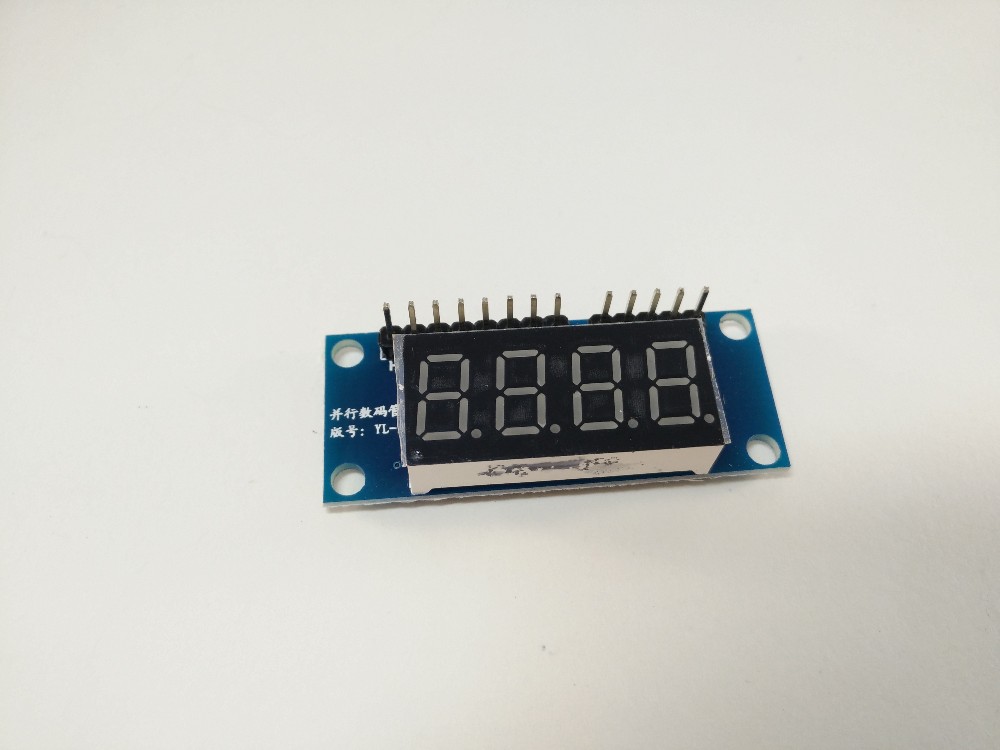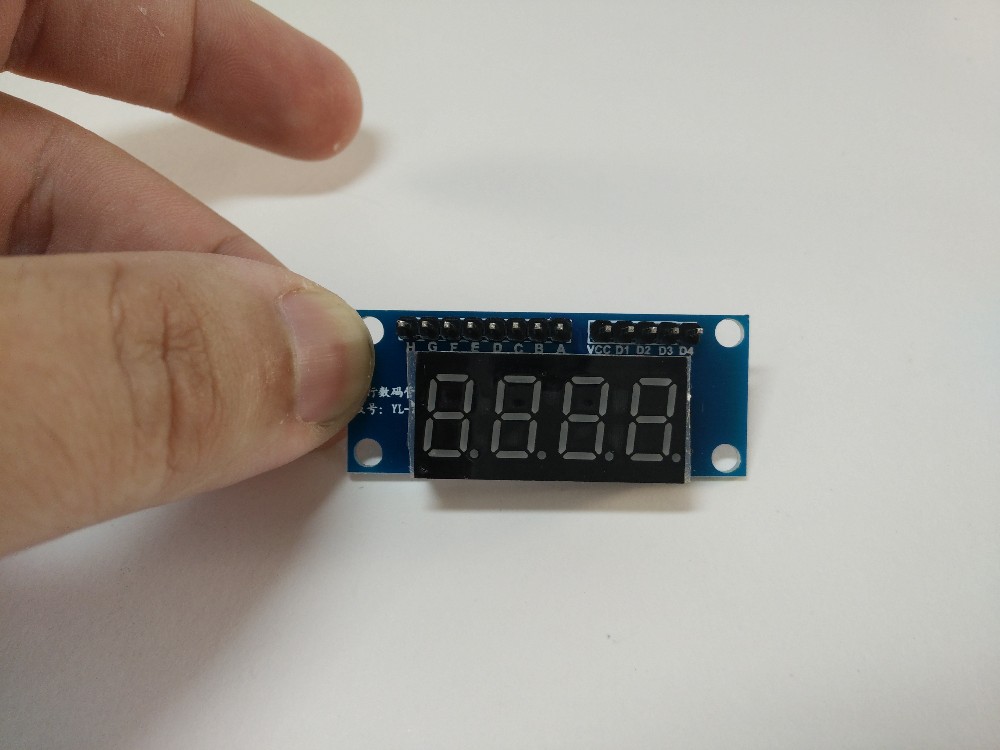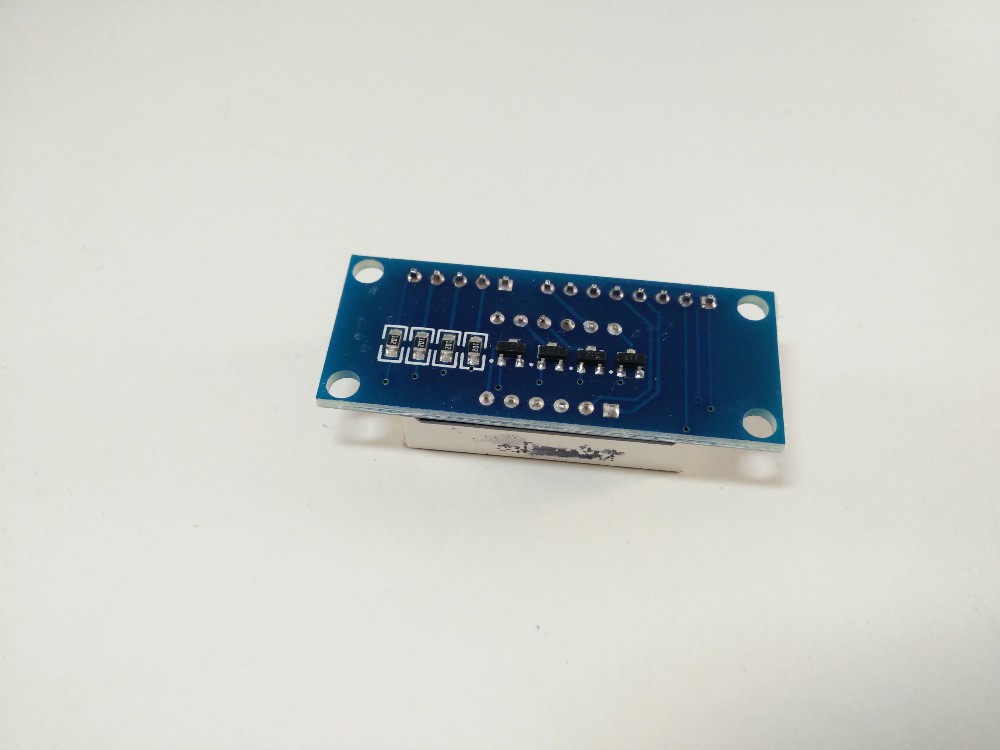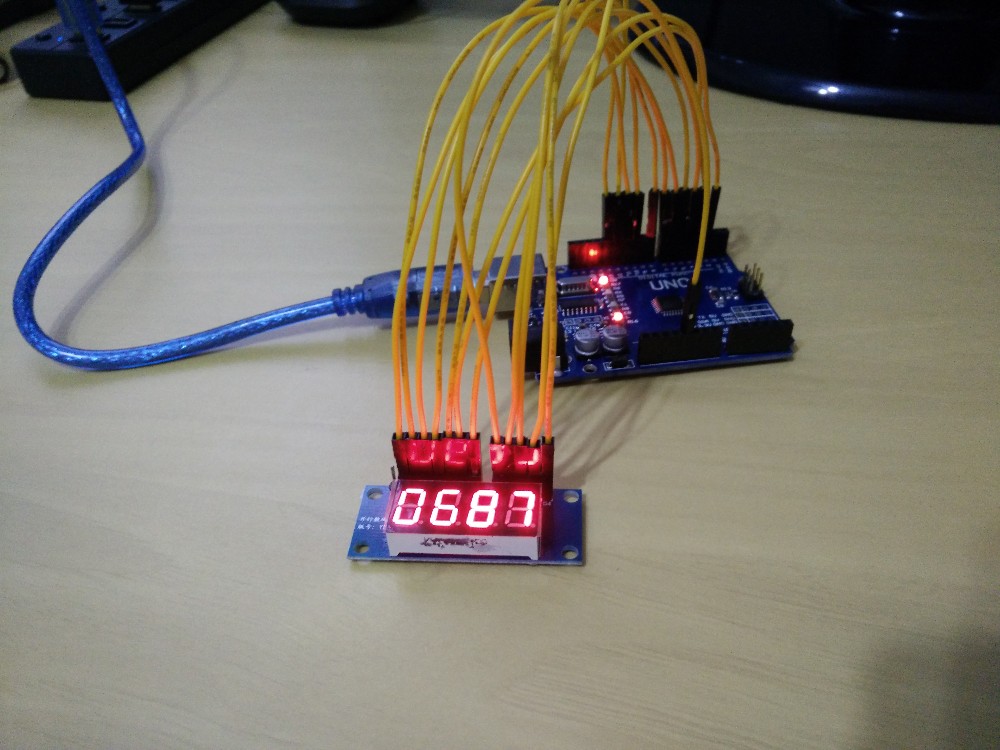Displays of 7 threads are still used for a multitude of applications, Despite being a little out of fashion. This below, is a graphics card 4 digits of 7 threads already ready for use, with transistors to perform multiplexing. Simply connect to a microprocessor and make the program.
There's the plaque! There is no logical circuit, only the entries in the,(B),(C),"[D:]".,,And,(F),G and decimal point, identified as H, and also enable each display (D1, D2, D3 and D4). There is also a VCC, It should be between 3.3 and 5V.
Below should give to see perfectly and the display board pinout. It is a common anode, IE, the segments light up with 0V (LOW) and with 5V (HIGH). Enable the display is also in low level, IE, to enable the display you must keep it in low level (PNP transistors).
Below you can see the circuit, where the PNP transistors are with the collector to common anode, with 1 k in series with the base. There are no resistors in series with the segments of the display, IE, should be placed externally.
I made a little program to show a counter to 1000s using Arduino and was quite easy. With this card you can't light the four display at the same time with different codes, IE, must multiplex the digits so that light separately very fast. If you don't want to do the program on hand, You can use the SevSeg library the Arduino. Below I used the pinout (Displays>Arduino): A->2, B->3, C->4, D->5, E->6, F->7, G->8, D1->10, D2->11, D3->12, D4->13, VCC->5V.
Look at the video I made:
I really liked the product. Is easy to use and connect to the Arduino (or any other microprocessor). Good tool to do a project or teaching about microcontrollers, including the multiplexing system that is used in all kinds of display. I leave below link to the product:
 Everything comes from China products reviews site purchased in China
Everything comes from China products reviews site purchased in China








